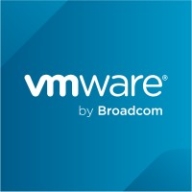

Nutanix Cloud Manager and VMware Tanzu Platform compete in cloud management and Kubernetes orchestration. Nutanix is preferred for its simple on-premises experience and ease of operation, while Tanzu stands out in multi-cloud and Kubernetes management.
Features: Nutanix Cloud Manager offers 1-click upgrades, X-Play automation, and intuitive dashboards for centralized management. It supports multiple scripting languages, providing versatility. VMware Tanzu Platform provides robust integration with VMware products and supports complex cloud-native applications with ESXi and vSAN integration.
Room for Improvement: NCM needs better pricing transparency, improved documentation, and support for multilanguage environments. Users also seek better integration with third-party tools. Tanzu requires improved integration with non-VMware environments, detailed networking capabilities, and clearer pricing. Users suggest enhancements in automation and multi-tenancy.
Ease of Deployment and Customer Service: NCM operates in on-premises and hybrid environments with high user satisfaction and technical support, offering seamless interaction with VMware. VMware Tanzu supports public and hybrid clouds, with strong Kubernetes management. Nutanix support is praised for its responsiveness, whereas VMware’s support can experience delays.
Pricing and ROI: NCM is competitively priced, allowing for gradual scaling and cost savings, with high ROI from operational efficiency. VMware Tanzu is more expensive, suited for larger enterprises with complex infrastructures, offering justified costs through integration capabilities but with less flexible pricing.
| Product | Market Share (%) |
|---|---|
| Nutanix Cloud Manager (NCM) | 5.2% |
| VMware Tanzu Platform | 1.1% |
| Other | 93.7% |


| Company Size | Count |
|---|---|
| Small Business | 24 |
| Midsize Enterprise | 23 |
| Large Enterprise | 64 |
| Company Size | Count |
|---|---|
| Small Business | 10 |
| Midsize Enterprise | 3 |
| Large Enterprise | 10 |
Nutanix Cloud Manager (NCM) is a cloud management tool that drives consistent governance across private and public clouds for its users. The solution brings simplicity and ease of use to managing and building cloud deployments by providing a unified multicloud management that addresses common cloud adoption challenges.
Nutanix Cloud Manager offers four key value drivers:
Nutanix Cloud Manager provides coverage for Nutanix private clouds as well as for VMware's. The solution also supports several popular public cloud providers, including Amazon AWS, Microsoft Azure, and Google Cloud Platform (GCP). NCM provides additional flexibility for users, as it is also available as a fully managed Software as a Service (SaaS). This product allows companies to benefit from all of Nutanix multicloud self-services, application automation, security compliance, and governance, without depending on Nutanix Cloud Infrastructure.
Nutanix Cloud Manager (NCM) Features
Nutanix Cloud Manager (NCM) has features in the four key categories already mentioned. Some of the main capacities of the solution include:
Nutanix Cloud Manager (NCM) Benefits
Nutanix Cloud Manager (NCM) provides its users with several benefits. These include:
Reviews from Real Users
An IT Operations at an energy/utilities company likes Nutanix Cloud Manager (NCM) because the product provides visibility, simplifies operations, and saves time and cost.
Drew P., a network systems administrator at Moda Health, rates NCM highly because the product saves man-hours with excellent speed on outcomes and provides a continuous validation process.
VMware Tanzu Platform is designed for cloud-native development and management of Kubernetes, CI/CD processes, microservices, and containerized workloads. It supports deployments both on cloud and on-premises, providing centralized management via Mission Control.
VMware Tanzu Platform offers seamless integration with vSphere, ESX, and vSAN, supporting centralized cluster management and lifecycle management. The platform provides a GUI for monitoring CI/CD pipelines and network policies, enhancing multi-tenancy and Day 2 operations. Users can easily manage Kubernetes clusters, monitor applications, and integrate with tools such as GitHub, GitLab, Cloud Foundry, and Azure. It ensures compliance and security for service providers, financial institutions, and businesses.
What are the key features of VMware Tanzu Platform?
What benefits and ROI should users look for in VMware Tanzu Platform reviews?
Industries such as financial institutions, service providers, and businesses requiring rigorous compliance and security deploy VMware Tanzu Platform. These entities benefit from centralized management, streamlined DevOps processes, and integrated tools, enhancing their capabilities in cloud-native developments and containerized workloads.
We monitor all Cloud Management reviews to prevent fraudulent reviews and keep review quality high. We do not post reviews by company employees or direct competitors. We validate each review for authenticity via cross-reference with LinkedIn, and personal follow-up with the reviewer when necessary.